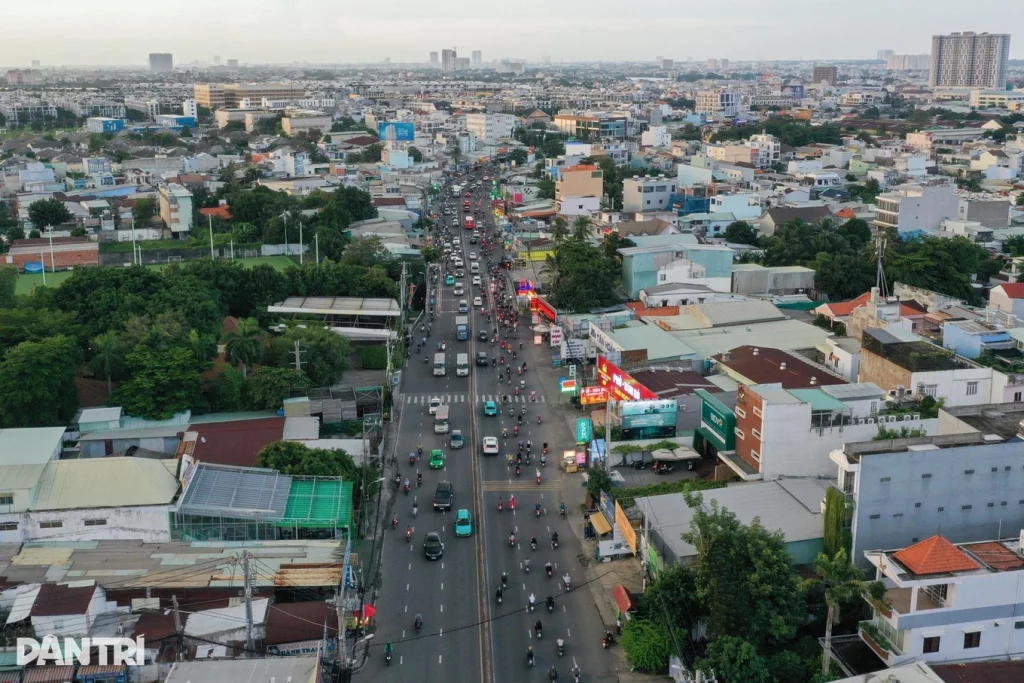Major infrastructure projects such as Ring Road No. 3, the North–South Expressway, and Long Thanh International Airport are providing a strong boost to the suburban real estate market surrounding Ho Chi Minh City, helping the area regain its momentum.
Vibrant Activity in HCMC’s Satellite Areas
Speaking at a recent event, Ms. Trinh Thi Kim Lien – Director of Product Business Development at Dat Xanh Services – said that since the end of Q3, key infrastructure projects including Ho Chi Minh City’s Ring Roads No. 3 and 4, Long Thanh Airport, Phase 2 of the North–South Expressway, and nine metro lines have been accelerating, triggering a wave of investment capital flowing toward infrastructure-linked developments.
Southern provinces such as Ho Chi Minh City, Dong Nai, and Tay Ninh, as well as northern ones like Bac Ninh, Thai Nguyen, and Hung Yen, have all seen significant capital inflows.
Completed transport connections are a driving force behind the suburbanization trend. Many developers are now ramping up project launches, groundbreaking ceremonies, and construction completions during this phase.
In Tay Ninh, enterprises under the TTC Group ecosystem are investing in and developing a 42-hectare industrial–urban–service complex in Trang Bang Ward. Among them, about 4,000 worker housing units will be built. Another project, Binh An Duc Hoa Urban Area, recently broke ground with 6,000 commercial apartments and a total investment of nearly VND 10 trillion.
In Ho Chi Minh City, Bcons Group announced it has completed over 5,000 apartments, nearly 200 townhouses, and a commercial center and hotel within the Bcons City complex.
Additionally, several developers including Masterise Homes, Phu My Hung, Gamuda Land, TT Capital, An Gia, and Dat Xanh have introduced a wide range of new products across various market segments.
A representative from PropertyGuru noted that while many developers are actively launching new projects, the market spotlight remains on Binh Duong and Ba Ria–Vung Tau. Particularly, Binh Duong has seen supply concentrated along key transport routes such as Ring Roads No. 3 and 4 and metro lines, clearly demonstrating the materialization of suburban expansion and satellite city development.

(Infrastructure connectivity supports the suburbanization trend – Photo: Trinh Nguyen)
Supply Imbalance Persists
Speaking to Dan Tri, Ms. Do Thu Hang, Senior Director, Research & Consulting at Savills Hanoi, said that since early this year, developers have begun surveying and preparing to launch new projects, while liquidity in many segments has shown improvement.
However, the Savills representative pointed out a structural bottleneck: supply imbalance. The mid-end apartment segment still dominates, whereas affordable housing—suitable for the majority—remains limited. If housing development policies are implemented timely and decisively, this imbalance could soon be resolved, paving the way for a more sustainable market.
Looking ahead to next year, Ms. Hang believes the apartment market’s recovery momentum will continue if favorable factors such as supply, liquidity, and supportive policies are maintained. She praised initiatives like tightening credit for second-home purchases, establishing state-managed trading platforms, and promoting social housing, which form a solid foundation for sustainable, end-user–oriented growth.
Nonetheless, she emphasized that the biggest challenges remain legal procedures and high input costs. To address these, she recommended expediting legal reforms, prioritizing projects in areas with reasonable land costs, and aligning development with infrastructure expansion and population decentralization away from the city center.


 Zalo
Zalo Webchat
Webchat